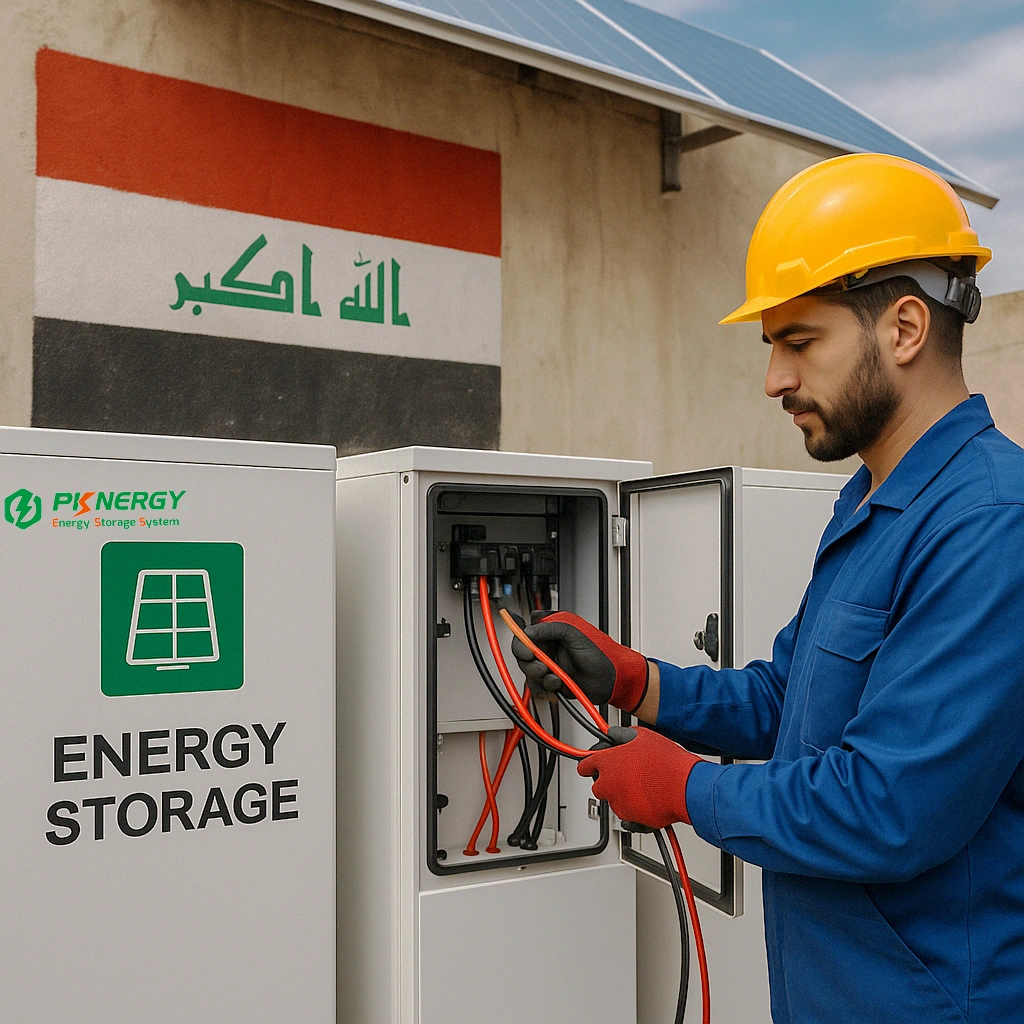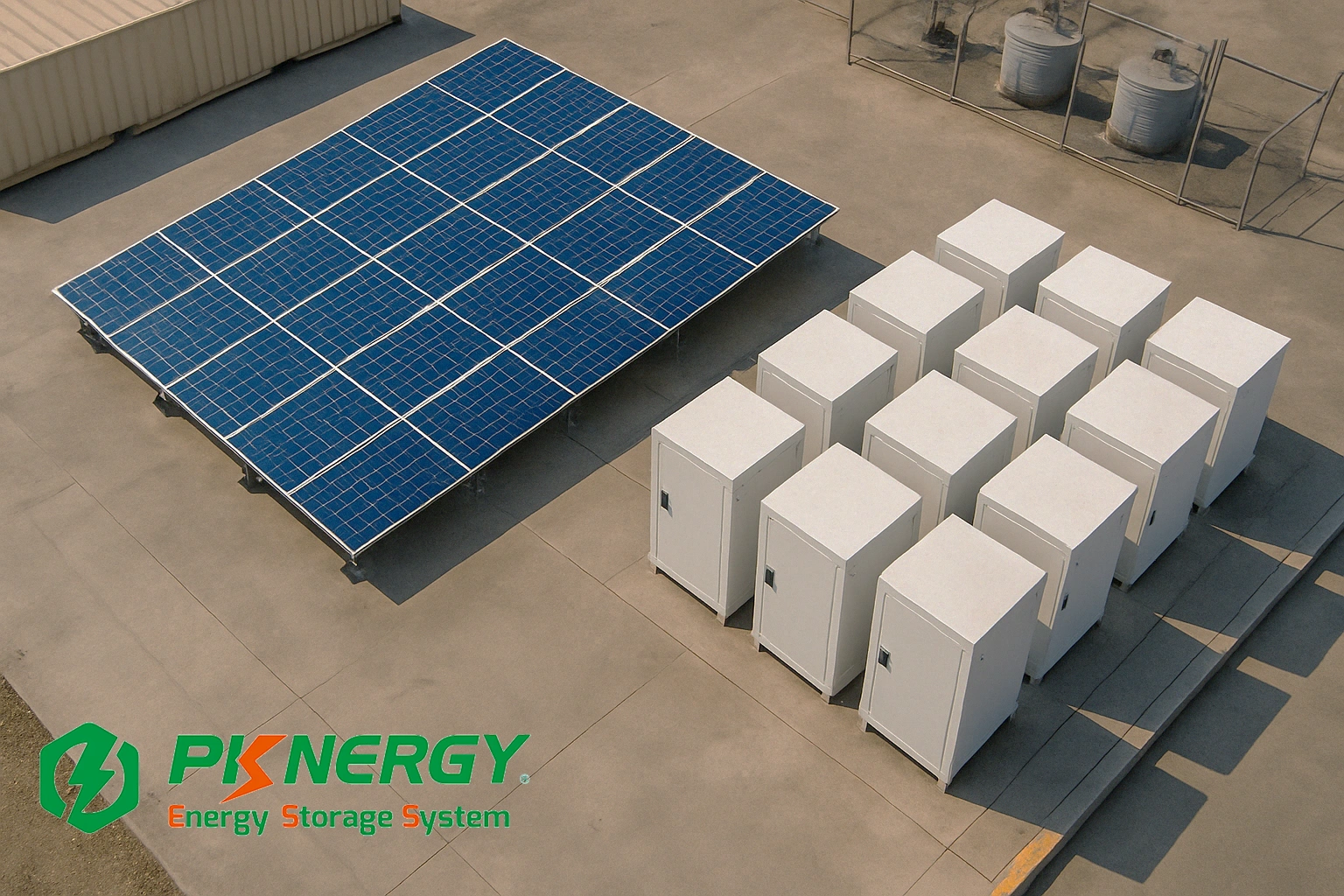Inleiding
Nu Irak zijn energie-infrastructuur opnieuw wil opbouwen en zijn energiemix wil diversifiëren, is hernieuwbare energie een strategische prioriteit geworden. Met een overvloedig potentieel aan zonne-energie en een dringende behoefte aan betrouwbare elektriciteit, is de Iraakse regering begonnen de sector open te stellen voor particuliere en buitenlandse investeringen. Bedrijven die zonne-, wind- of mogelijkheden voor energieopslag in IrakInzicht in de huidige netwerkomstandigheden, de energievraag en de economische aspecten van investeringen is essentieel. Dit artikel biedt een uitgebreid overzicht voor besluitvormers die het landschap van hernieuwbare energie in Irak evalueren.
Wat is de huidige staat van de energie-infrastructuur in Irak?
De energie-infrastructuur van Irak heeft lang geleden onder oorlogsschade, onderinvesteringen en verouderende activa. De transmissie- en distributienetwerken zijn verouderd, wat resulteert in hoge technische verliezen - naar schatting meer dan 30% in sommige regio's. Stroomstoringen komen nog steeds vaak voor en veel gemeenschappen zijn afhankelijk van dieselgeneratoren om in hun dagelijkse energiebehoefte te voorzien.
De afgelopen jaren is Irak begonnen met het moderniseren van zijn elektriciteitsnet door middel van door het buitenland gefinancierde projecten en publiek-private partnerschappen. Toch is er nog steeds behoefte aan gedecentraliseerde energieoplossingenzoals opslagsystemen voor zonne-energie en batterijen, groeit.
Hoe betrouwbaar is de huidige stroomvoorziening in Irak?
Ondanks verbeteringen in de opwekkingscapaciteit worstelt Irak nog steeds met een aanzienlijke kloof tussen vraag en aanbod. In de zomermaanden, vooral tussen Juni en augustuskunnen elektriciteitstekorten oplopen tot 10-15 uur per dag in sommige provincies. Netstoringen en spanningsschommelingen komen vaak voor.
Het Iraakse ministerie van Elektriciteit heeft verklaard dat de nationale vraag meer dan 30 GW bedraagt, terwijl de beschikbare opwekkingscapaciteit vaak 10 GW of meer tekortschiet. duidelijke kansen voor gedistribueerde hernieuwbare energie en hybride oplossingen om in te grijpen.
Wat drijft de groeiende vraag naar elektriciteit in Irak?
Door verschillende structurele trends stijgt de vraag naar elektriciteit in Irak:
-
Bevolkingsgroei: Meer dan 43 miljoen mensen en stijgende
-
Verstedelijking: Nieuwe huizen en commerciële ontwikkelingen
-
Klimaatomstandigheden: Extreem hoge koellasten in de zomer
-
Industriële ontwikkeling: Nieuwe fabrieken en infrastructuurprojecten
Prognoses van internationale organisaties verwachten dat het stroomverbruik in Irak verdubbelen tegen 2035Dit versterkt de dringende behoefte aan nieuwe, schone en schaalbare energieoplossingen.
Wat zijn de elektriciteitstarieven en kostentrends in Irak?
Irak hanteert zwaar gesubsidieerde elektriciteitsprijzen, vooral voor particuliere gebruikers. Echter, particuliere producenten rekenen hoge prijzenvaak 5-10 keer meer dan het nationale elektriciteitsnet. In veel gebieden betalen bedrijven:
| Bron | Kosten bij benadering (USD/kWh) |
|---|---|
| Nationaal netwerk | ~$0,01-0,02 |
| Dieselgenerator | ~$0,20-0,30 |
Terwijl de overheid begint met het hervormen van haar subsidiestructuur en het gefaseerd invoeren van tijdgebonden tarieven, commerciële en industriële consumenten zullen profiteren van energieopslagsystemen die de afhankelijkheid van piekmomenten van generatoren of onstabiele netvoeding verminderen.
Hoe veelbelovend is het potentieel van Irak op het gebied van zonne-energie?
Met meer dan 3.000 zonuren per jaar en een hoge zonne-instraling (>5,5 kWh/m²/dag) heeft Irak een van de sterkste zonneprofielen in de MENA-regio. Uitgestrekte woestijngebieden, vooral in Anbar, Najaf en Basrazijn ideaal voor zonne-energie op grote schaal.
Overheidsdoelen zijn onder andere 12 GW hernieuwbare capaciteit tegen 2030met actieve steun van internationale partners en agentschappen. Dit maakt Irak tot een nieuwe markt voor zonne-energieontwikkelaars en technologieleveranciers.
Hoe de juiste batterij voor energieopslag selecteren voor de netwerkomstandigheden in Irak?
Gezien de hoge temperaturen in Irak, de frequente stroomuitval en de beperkte stabiliteit van het elektriciteitsnet, moeten energieopslagsystemen zorgvuldig worden ontworpen. Belangrijke overwegingen zijn onder andere:
-
Chemie van de batterij: LiFePO₄ batterijen bieden een betere thermische stabiliteit dan NMC
-
Koelsysteem: Vloeistofkoeling wordt aanbevolen voor langdurige prestaties in omgevingen >45°C
-
Zwarte start mogelijk: Nuttig voor het reactiveren van systemen na volledig stroomverlies
-
Modulaire schaalbaarheid: Inzet mogelijk op stedelijke, landelijke en niet aan het net gekoppelde locaties
Voor investeringswaarde op de lange termijn moeten batterijen prioriteit geven aan levensduur, veiligheid en lokale bruikbaarheid.
Hoe kunnen PKNERGY energieopslagsystemen helpen om de operationele kosten te verlagen?
Door lithium-gebaseerde opslag te integreren met zonne-energie of hybride systemen, stellen PKNERGY-oplossingen Iraakse bedrijven in staat om:
-
De afhankelijkheid van diesel verminderen
-
Minimaliseer de blootstelling aan prijsschommelingen van de generator
-
Verplaats ladingen weg van piekuren
-
Stabiliseer stroom voor gevoelige apparatuur of productielijnen
In commerciële omgevingen kan het overschakelen van dieselopwekking naar batterijopslag een besparing opleveren die kan oplopen tot 50-70% van de operationele energiekosten over een periode van 5-10 jaar, afhankelijk van het gebruiksprofiel en de brandstofprijzen.
Conclusie
Irak ondergaat een grote transitie in zijn energiesector, wat aanzienlijke kansen biedt voor vooruitziende investeerders en aanbieders van oplossingen. Met een onderontwikkeld elektriciteitsnet, extreme stroomtekorten en een zonne-instraling van wereldklasse biedt het land ideale omstandigheden voor het inzetten van hernieuwbare energie + opslagsystemen die zowel stabiliteit als kostenbesparingen op lange termijn bieden.
In deze context is het essentieel om een partner te kiezen met diepgaande technische ervaring, robuuste productprestaties en wereldwijde projectleveringscapaciteit. PKNERGY's oplossingen voor energieopslag op batterijen zijn ontworpen voor omgevingen met hoge temperaturen, frequente stroomonderbrekingen en hybride zonne-integratie - precies de omstandigheden waarmee Iraakse gebruikers te maken hebben.
Of u nu een overheidsinstantie, EPC-aannemer, systeemintegrator of eigenaar van een commerciële faciliteit bent, werken met PKNERGY betekent toegang krijgen tot:
-
Bewezen oplossingen voor netinstabiliteit en generatorvervanging
-
Schaalbare ontwerpen die geschikt zijn voor zowel on-grid als off-grid toepassingen
-
Technische ondersteuning op maat voor het klimaat, de spanning en de gebruikspatronen in Irak
Terwijl Irak zijn energietransitie versnelt, staat PKNERGY klaar om lokale belanghebbenden te ondersteunen met betrouwbare, aanpasbare opslagtechnologieën die klaar zijn voor de toekomst.





